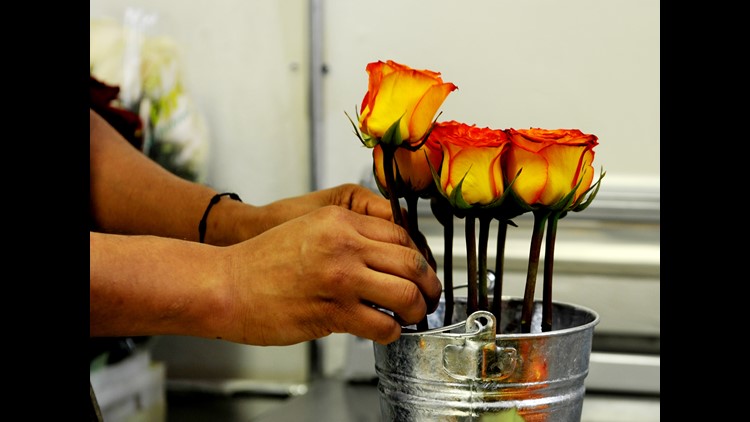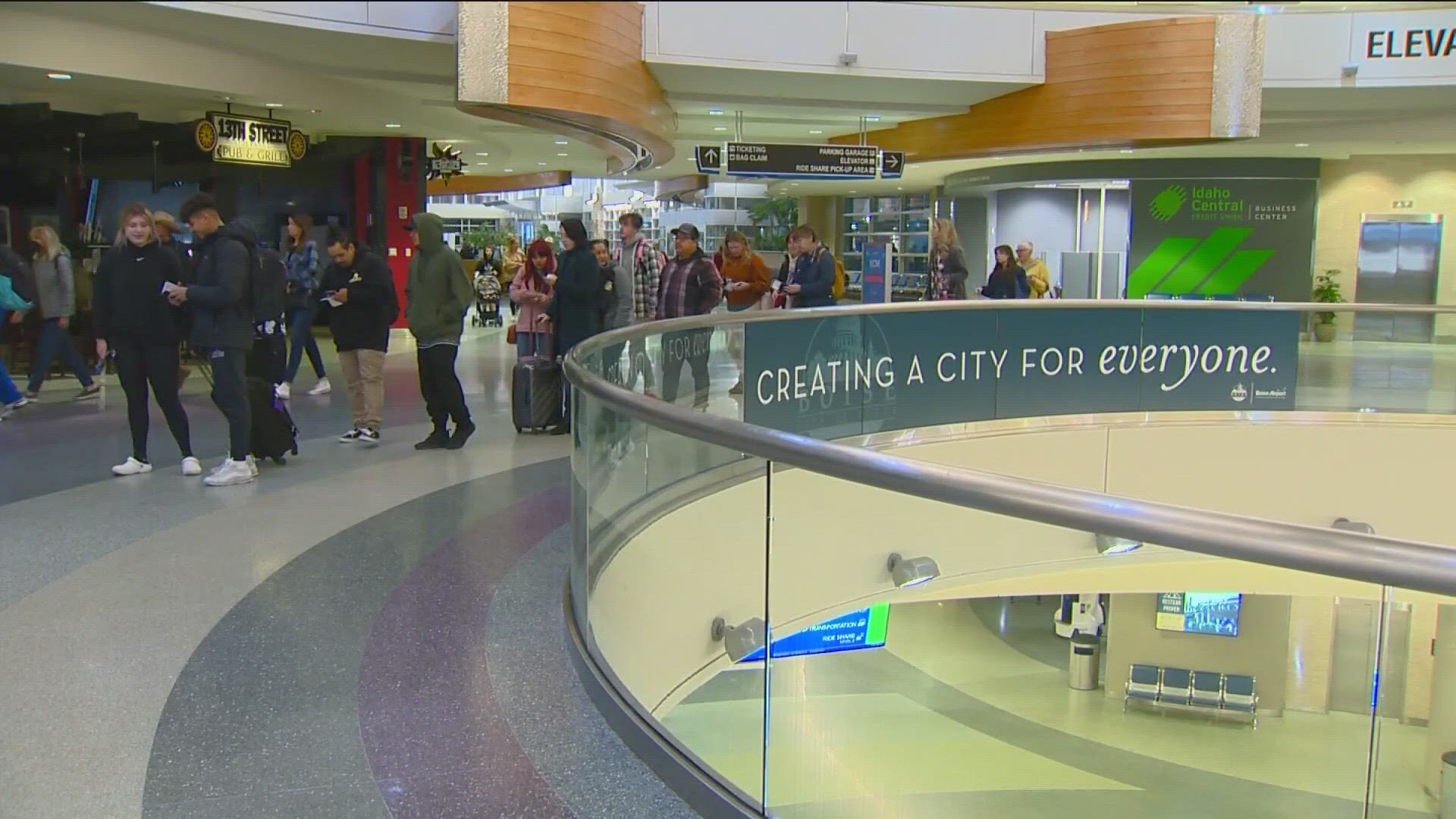A flower's beauty can be diminished by high prices and overwhelming options, especially around Valentine's Day when prices tend to surge. Lovebirds spend an average of about $100-$120 for Valentine's Day flowers these days, according to the Society of American Florists (SAF).
The flower industry is constantly changing as prices fluctuate and varieties are introduced throughout the year, which is why Chris Drummond, president-elect of the SAF in Alexandria, Va., says consumers shouldn't be embarrassed if they have questions.
"There are so many hundreds of varieties of flowers. Even me, in the business, every year I find something I've never seen before," he said. "We certainly expect our consumers not to know about certain varieties. We expect you to have questions."
It's helpful to understand, that pricing is not standardized in the floral industry, says Kayle Walker Burns, owner of Petal and Bean Floral & Event Planning in Breckenridge, Colo. What one florist charges likely is different from other florists, and you also can expect differences if you buy flowers at a grocery store, online or from a local florist.
We asked professional florists to share their top tips for buying bouquets and other items during flower-centric holidays and events.
Preorder for your best chance to get what you want.
According to the Society of American Florists, the ideal window for preordering flowers is three to 10 days.
Preordering helps florists make sure they have the right and freshest flowers for the consumers - and ensure first availability. The closer you purchase flowers to the holiday, the greater chance of availability and the price may be affected.
Valentine's Day is on a Wednesday this year, so florists expect more flower purchases in lieu of spending a weekday evening out. People are too busy with life and jobs, unlike when the holiday falls on a weekend, Drummond says.
When you preorder, especially with a florist in a resort town like where Burns' shop is located in Colorado, you can be more specific in terms of what flowers you want. If you wait for the day before, or day of the holiday or special occasion, you might be limited to what the shop has on hand or the florists' choice, Burns says.
For weddings, Heather Cole, owner and designer of Forever Cole Events in Oklahoma City, says it's best for couples to plan six to nine months in advance so she can secure flowers from her farm suppliers.
Pictures on the internet can be deceiving.
Florists know busy consumers might want to save time by purchasing flowers online or on the phone. But they encourage people to come into their shops to make the best decision when purchasing a gift or arrangements for events, such as weddings.
"I suggest you stop in and look at them, because pictures on the internet can be deceiving," said Drummond. "It's difficult to tell size."
For example, there are hundreds of varieties of roses with unique characteristics including stem length, bud size and how full they bloom, color, petal count and fragrance.
This is equally important when picking out wedding flowers and trying to match colors with bridesmaid dresses, for example.
"Flowers change throughout the season and throughout different farms," said Cole. "So the color can vary slightly."
Orchids and succulents give you more bang for your buck.
For those who are looking for options that may last longer for their budget, Drummond says that succulents are popular and trendy - especially among millennial consumers.
"They last for weeks and weeks. Some of our customers have a green thumb, and they can get them to bloom next year, so there really is a long time they can be enjoyed," Drummond said. "They are easy to take care of and fun."
We really want you to give us a budget.
For Valentine's Day, if you are on a budget, Drummond says every florist has a value option and suggests that consumers ask what's available at their local shop.
"It might just be like a really cool little container with a succulent and maybe some decorative stones and maybe an orchid," he said. "Just real simple, but the vase is kind of cool and it's trendy and it has a lot of interest, but it's not very large. So sometimes you can get something very fun, very different, without breaking the bank."
For weddings, budgets obviously are bigger. Drummond, who owns Plaza Flowers in the Philadelphia area, says his customers spend about $3,000-$3,500 on wedding florals. Burns says her customers spend about $3,000-$5,000.
Burns says she always asks the budget upfront, not to try to maximize a budget, but to offer cost-saving tips, such as using bridesmaid bouquets as centerpieces. She says she can find flowers within anybody's budget.
"There's always thousands of choices when it comes to flowers," she said.
For example, for those who like peonies, which are a premium flower with a higher cost, Burns says she can recommend other flowers, like a football mum.
"So you can always see what they like and then recommend other options if they don't have the price point," she said.
Stick with one florist on your wedding day.
When picking venue and reception locations, ask if they have their own florists.
Consumers are better off partnering with one expert vendor to ensure design styles or flower colors match, Drummond says. Talk to your florist, he says, and even tell him or her about what you were looking at to see if they can match the price or suggest something similar.
"By dealing with just one vendor, it is one less headache," he said.
Location matters - a lot.
Flowers can be shipped from all over the world, depending on when and where it's needed. Florists often purchase flowers from from wholesalers or directly from farms, which Burns says cuts out the middleman.
Exotic flowers, however, such as birds of paradise, are becoming more common due to certain farms growing them, Drummond says. Greater availability means customers are less likely to experience an upcharge for those flowers, especially around the holidays.
Where you purchase flowers can also impact price. For example, Burns says, being in a resort area makes the flowers more expensive than a florist in a larger city, such as Denver. Her shop receives flowers three times a week during her peak wedding season (end of May through October), but only once a week during the rest of the year.
Think before you subscribe.
Subscription services allow people to sign up for a certain number of deliveries throughout the year. For some people, it may be worthwhile to invest in a subscription instead of scrambling to order bouquets close to the holidays.
Cole offers a $220 subscription service that delivers flowers for Mother's Day, Easter and Christmas, plus a wild card (day of your choosing). Local delivery is free.
"That one can be whatever they want, so if they're like, 'It's for my mom's birthday, and her favorite color is yellow, could you pair it around that?' Well, of course," Cole said. "But they really come from my style, and what I can do that will allow my creative freedom."
Other subscription options include BloomsyBox.com, which ranges from $39.99-$48.99 per month, or between $408.09-$529 for a 12-month plan with a new bouquet each month.
MagnifyMoney is a price comparison and financial education website, founded by former bankers who use their knowledge of how the system works to help you save money.



